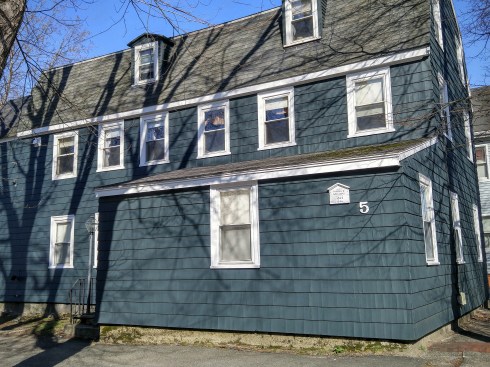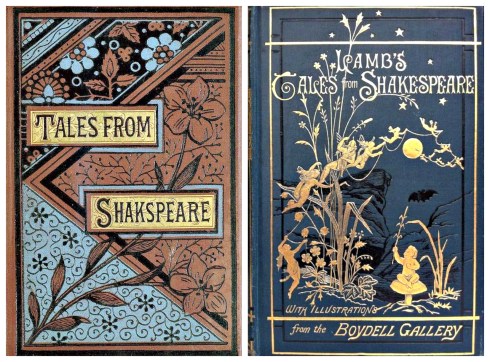May–my favorite month of the year, representing the end of the school year, high time for gardening, that perfect shade of soft spring green, my anniversary, and a kind of wistful merriment which is actually more academic than experiential–because I’m generally too busy in May to engage in such merriment. But I always feel like the need to find a celebratory drink to toast to the spring, and the summer to follow. The traditional beverage is May Wine (Maiwein), which I have made on several occasions: a sweet white wine infused with sweet woodruff and a few other additions. My sweet woodruff has yet to really appear, much less bloom, so I don’t think that’s going to work this year. So I went backwards in time and beverage books looking for something new/old, beginning with George Edwin Roberts’ Cups and their Customs (1863), which has a fantastic title page but not much else.

Then I went way back to the sixteenth century and a favorite “receipt” book, Thomas Dawson’s The Good Huswife’s Jewell (parts one and two): here there are medicinal waters but nothing to accompany May merriment. In the Elizabethan age, that would be left to a host of imported wines, I think: malmsey, sack, claret, canary, brandy. Heavy, sweet wines which are not appropriate for Spring in any case. Jump forward to the mid-seventeenth century and a trio of popular “celebrity” cookbooks featuring the recipes of Charles I’s exiled and widowed Queen Henrietta Maria, ostensibly penned by her personal chef: The Queens Closet Opened. Being Incomparable Secrets in Physick, Chyrurgery, Preserving, Candying, and Cookery, A Queen’s Delight; or, the Art of Preserving, Candying and Cookery, and The Compleat Cook, all first appearing in 1655. I looked through a later, lovely digitized edition of A Queen’s Delight at the Beinecke Library at Yale and found several fruity “country wines”: raspberry looks good, “water of time for the passion of the heart” interesting.




Over the course of the seventeenth century, Englishmen (and women too, I assume) were realizing that their dependence on imported foreign wines was not in their personal or national interests and searching for domestic substitutes. A succession of tracts appeared encouraging the planting of orchards and providing recipes for cider, perry, and a host of fruit wines. One of the most influential of these publications was John Worlidge’s Vinetum Britannicum: Or, a Treatise of Cider, and Such other Wines and Drinks that are extracted from all manner of Fruits Growing in this Kingdom (1676). As its title page illustration suggests, this is a rather practical publication: I really don’t have the inclination to make cider but perhaps I could buy some and doctor it up?


So that idea brought me to one of my favorite modern books: Amy Stewart’s The Drunken Botanist. The Plants that create the World’s Great Drinks. Two of Stewart’s recipes could be candidates for my “toast to spring” drink: cider cup, an adapted version of medieval dépense made by combining hard cider with fruits and ginger beer (or ale), and Kir Normand, in which crème de cassis is mixed with cider. Or I could just pick up one of Salem’s own Far from the Tree ‘s seasonal ciders and leave it at that!


Buy Local; or Why invent the Wheel?












 The North Shore coastline from Edwin Rowe Snow’s The Romance of Boston Bay, 1970;
The North Shore coastline from Edwin Rowe Snow’s The Romance of Boston Bay, 1970; 



























 Salem’s Gateway, 1912
Salem’s Gateway, 1912
 The “Stinking” North River and “Billboard Adornment” on Bridge Street.
The “Stinking” North River and “Billboard Adornment” on Bridge Street.




 From above: Central Street looking towards Essex; the intersection of Washington and Lynde Streets; two views of the intersection of North and Lynde Streets; a trolley turning onto Federal Street; Elm and Walnut Streets.
From above: Central Street looking towards Essex; the intersection of Washington and Lynde Streets; two views of the intersection of North and Lynde Streets; a trolley turning onto Federal Street; Elm and Walnut Streets.
 Two Salem streets which the Commissioners actually LIKED for both their width and their trees: Broad and Lafayette. Both would be half-leveled by the Great Salem Fire in 1914.
Two Salem streets which the Commissioners actually LIKED for both their width and their trees: Broad and Lafayette. Both would be half-leveled by the Great Salem Fire in 1914.












![20160415_160607_HDR~2[1]](https://i0.wp.com/streetsofsalem.com/wp-content/uploads/2016/04/20160415_160607_hdr21.jpg?resize=490%2C368&ssl=1)
![20160415_160600_HDR~2[1]](https://i0.wp.com/streetsofsalem.com/wp-content/uploads/2016/04/20160415_160600_hdr21.jpg?resize=490%2C653&ssl=1)
![20160415_165155_HDR~3[1]](https://i0.wp.com/streetsofsalem.com/wp-content/uploads/2016/04/20160415_165155_hdr31.jpg?resize=490%2C653&ssl=1)



















